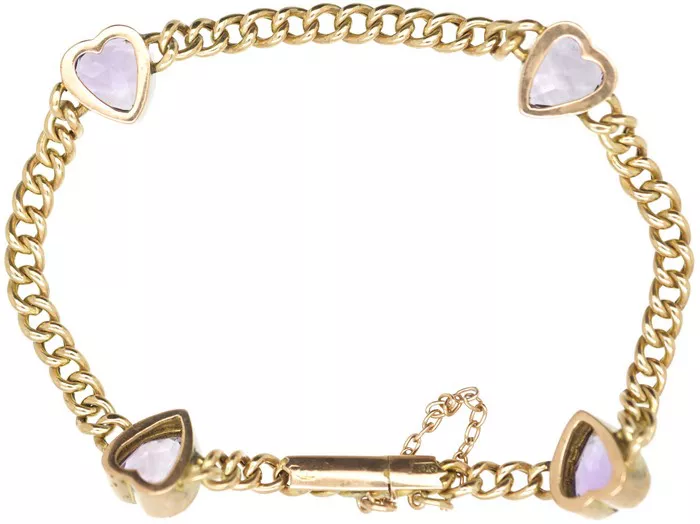Bracelets, as jewelry items worn around the wrist, have been integral to human adornment for millennia. From ancient civilizations to modern fashion trends, bracelets have evolved in style, materials, and cultural significance. This comprehensive article delves into the rich history of bracelets, exploring their origins, evolution, and periods of peak popularity throughout different eras and cultures. By examining their historical context and enduring appeal, we gain insights into how bracelets have transitioned from functional ornaments to symbolic expressions of identity, status, and style.
Origins and Early History of Bracelets
The history of bracelets dates back to ancient times when early civilizations crafted jewelry from natural materials found in their environments. Here’s a glimpse into the origins and early uses of bracelets:
Ancient Civilizations:
Egyptian Bracelets: In ancient Egypt, bracelets were worn by both men and women as symbols of wealth, status, and protection. They were often crafted from gold, silver, and precious gemstones and adorned with intricate designs and religious symbols.
Mesopotamian Bracelets: Mesopotamian civilizations such as the Sumerians and Babylonians adorned themselves with bracelets made from metals, shells, and stones. These bracelets served as decorative ornaments and status symbols.
Greek and Roman Bracelets: In ancient Greece and Rome, bracelets were worn by affluent individuals to signify social status and allegiance to gods. They were often crafted from gold, silver, and adorned with symbols of deities and mythological creatures.
Functional and Symbolic Uses:
Protective Talismans: Many ancient bracelets served dual purposes as decorative items and protective talismans believed to ward off evil spirits, illness, and misfortune. Amulets and charms were often incorporated into bracelet designs for added symbolism.
Cultural Significance: Bracelets held cultural significance in various societies, symbolizing rites of passage, marital status, and affiliation with religious or spiritual beliefs. They were passed down through generations as heirlooms and cherished artifacts.
Bracelets in Medieval and Renaissance Europe
During the Middle Ages and Renaissance periods in Europe, bracelets continued to be worn as expressions of wealth, social status, and religious devotion. Key developments during this time include:
Religious Bracelets:
Rosary Bracelets: Devout Christians wore rosary bracelets as miniature versions of the traditional rosary beads used for prayer. These bracelets featured beads or knots arranged in specific patterns to facilitate prayers and meditation.
Medieval Jewelry: Nobility and royalty adorned themselves with bracelets embellished with gemstones, enamelwork, and intricate metalwork. These bracelets were symbols of power, lineage, and courtly status.
Functional and Decorative Elements:
Chain Bracelets: Chain-link bracelets gained popularity during the Renaissance, characterized by intricate designs and craftsmanship. They were worn by both men and women as fashionable accessories.
Engraved and Inscribed Bracelets: Personalized bracelets with engraved names, dates, or messages became popular gifts and tokens of affection among the upper classes. These bracelets conveyed sentiments of love, friendship, and loyalty.
Bracelet Trends in the 18th and 19th Centuries
The 18th and 19th centuries witnessed significant developments in jewelry design and bracelet styles, influenced by changing social norms, technological advancements, and global trade:
Victorian Era Bracelets:
Sentimental Jewelry: During the Victorian era, bracelets adorned with lockets, hairwork, and miniature portraits became fashionable. These sentimental pieces symbolized love, remembrance, and mourning.
Charm Bracelets: Charm bracelets gained popularity as wearable collections of small charms representing significant life events, hobbies, or personal beliefs. They were cherished keepsakes passed down through generations.
Art Nouveau and Art Deco Bracelets:
Artistic Movements: The Art Nouveau and Art Deco movements in the late 19th and early 20th centuries inspired innovative bracelet designs characterized by fluid lines, geometric shapes, and bold colors. Bracelets became statement pieces reflecting artistic expression and modern sensibilities.
Gemstone and Metal Combinations: Art Deco bracelets featured combinations of diamonds, emeralds, rubies, and sapphires set in platinum or white gold. These luxurious bracelets symbolized glamour, sophistication, and prosperity.
Bracelets in the 20th and 21st Centuries
The 20th century marked a period of diversity and experimentation in bracelet styles, influenced by fashion trends, technological advancements, and cultural movements:
Mid-20th Century Bracelets:
Bangles and Cuffs: Bangles and cuff bracelets became popular in the mid-20th century, favored for their bold, minimalist designs. They were often crafted from sterling silver, stainless steel, and later, colorful plastics and acrylics.
Charm Bracelet Revival: The mid-20th century saw a revival of charm bracelets, with companies like Pandora introducing customizable charm bracelets featuring a wide range of thematic charms.
See Also: How Can You Tell if a Stone Bracelet Is Real?
Contemporary Bracelet Trends:
Fashion and Costume Jewelry: Contemporary fashion trends influence bracelet styles, with designers experimenting with unconventional materials, mixed metals, and avant-garde designs.
Technology Integration: Smart bracelets incorporating fitness trackers, health monitors, and communication devices have emerged as functional accessories catering to tech-savvy consumers.
Cultural and Symbolic Meanings Today
Today, bracelets continue to hold diverse cultural and symbolic meanings across different regions and communities:
Global Influence: Bracelet styles reflect global fashion trends and cultural influences, with designers drawing inspiration from traditional craftsmanship and contemporary aesthetics.
Personal Expression: Bracelets serve as expressions of personal style, individuality, and self-expression. From minimalist designs to statement pieces, they allow wearers to convey their personality and values.
Spiritual and Healing Bracelets: Many individuals wear bracelets embedded with crystals, gemstones, or symbols believed to promote spiritual healing, positivity, and well-being. These bracelets blend ancient traditions with modern holistic practices.
Conclusion
Bracelets have transcended time and cultures, evolving from functional ornaments to symbols of personal expression, cultural identity, and fashion statements. Throughout history, bracelets have reflected societal norms, technological advancements, and individual preferences, showcasing a remarkable diversity in design, materials, and symbolism.
Whether worn for fashion, sentimentality, spiritual beliefs, or simply as a reflection of personal taste, bracelets continue to captivate and adorn wrists worldwide. By appreciating their historical significance and enduring appeal, we recognize bracelets as enduring symbols of human creativity, craftsmanship, and the timeless allure of jewelry.

